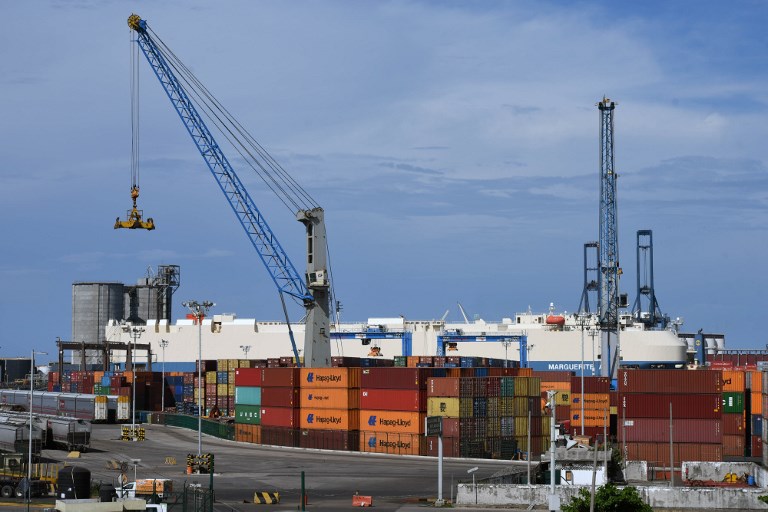by H


Mexican President-elect Andres Manuel Lopez Obrador called Monday for a three-way trade deal with the United States and Canada, saying a two-way agreement reached with the US was just a first step. “It’s important that Canada also be included,” said the leftist president-elect, who takes office on December 1. “The free-trade agreement should remain as it was originally conceived” he told journalists./ AFP PHOTO
eather SCOTT
Agence France Presse
WASHINGTON, United States (AFP) — Canada and the United States appeared to be moving closer to a new regional free trade pact, as US President Donald Trump and Canadian Prime Minister Justin Trudeau on Wednesday touted the progress being made.
As the crucial phase of talks continued in Washington to try to bridge the differences on a rewrite of the North American Free Trade Agreement, the optimism raised hopes NAFTA would continue as a three-nation pact with Mexico, despite Trump’s threat to leave Canada on the sidelines.
“I think they’re going really well,” Trump said when asked about the Canada talks at a White House event. “I think Canada very much wants to make the deal.”
He again raised the possibility of doing a separate deal with Canada alone but for the Friday deadline, “I think we’re probably on track. We’ll see what happens.”
Trudeau also said the agreement could happen by the end of the week — the deadline the United States has set to have at least the broad accord completed.
“There is a possibility of getting to a good deal for Canada by Friday,” Trudeau said. But any agreement “will hinge on whether or not there is ultimately a good deal for Canada,” Trudeau said at a student rally in northern Ontario.
“I have said from the very beginning no NAFTA deal is better than a bad NAFTA deal,” he added, echoing Trump’s words.
After Mexico paved the way by agreeing to a NAFTA 2.0 with the United States on Monday, Canada’s Foreign Minister Chrystia Freeland said “a lot has been accomplished” in her two meetings so far with US Trade Representative Robert Lighthizer.
The United States and Canada are now engaged in “an extremely intense period in the negotiations,” she told reporters on Wednesday, adding that trade officials had worked late into the night outstanding issues.
Freeland declined to get into specifics on what issues remained, saying she and Lighthizer agreed not to discuss the details in public.
‘High-level’ agreement
Lighthizer said he would officially notify the US Congress on Friday of the intention to enter into a new trade pact in 90 days. The White House then would have until September 30 to present Congress with the final NAFTA agreement.
The sticking points between Ottawa and Washington likely will center on Canada’s managed dairy market and how to handle some disputes among NAFTA partners.
Negotiators have worked for a year to update and rewrite the 25-year-old free trade pact. But in the last five weeks, Washington and Mexico City held talks to resolve their bilateral issues, especially on the auto industry rules, without Ottawa.
While critics said Canada had been frozen out, Freeland has repeatedly stressed to reporters that she remained in close touch with her US and Mexican counterparts throughout the summer and had already achieved “a high-level agreement with the US” on some the pending issues on autos and labor rights.
She also met late Tuesday night with her Mexican counterparts, who had remained in Washington after announcing the breakthrough with the United States.
She praised Mexico’s willingness to make difficult concessions on auto trade and labor issues, which helped pave the way for a three-party agreement.
“Our workers have been concerned for a long time…about the way in which trade agreements can harm blue-collar workers in high-wage countries,” she said.
The “significant compromises that Mexico was prepared to make to support Canadian workers …set the stage for very intensive conversations” to conclude NAFTA.
Wall Street was cheered by the signs of progress, with all three major stock indices closing with solid gains, and the Nasdaq and S&P 500 both setting new records.
The outlines of the new NAFTA include a higher percentage of locally-produced components in autos, a percentage of vehicles that must come from high wage factories, tougher worker protections and a provision to review the 16-year deal every six years.
Still, Trump said he would take a tough line with Canada on dairy trade — long a source of tension between the neighboring countries.
Trudeau has nevertheless vowed not to give in to Washington’s demands to alter the system under which Ottawa sets dairy production quotas and prices, with steep tariffs on imports.
The system has been in place since the 1970s and has survived several attempts to undo it.
Trudeau faces political pressure with elections due in a year, which could make him wary of being seen as capitulating to Trump, especially on dairy.
But Ottawa could offer US dairy farmers a small increase in market share as it did with the EU in a free trade pact last year.
Canada also objects to the US call to eliminate bi-national panels to resolve trade disputes among NAFTA partners under Chapter 19, which appears to have been dropped in the deal with Mexico. Canada has used the provision to challenge US anti-dumping and countervailing duties.
But Washington also backed away from a strenuously-opposed provision to require the three nations to renegotiate the trade pact after five years. Instead, the agreement with Mexico extends NAFTA for 16 years but with a review every six years.
© Agence France-Presse
